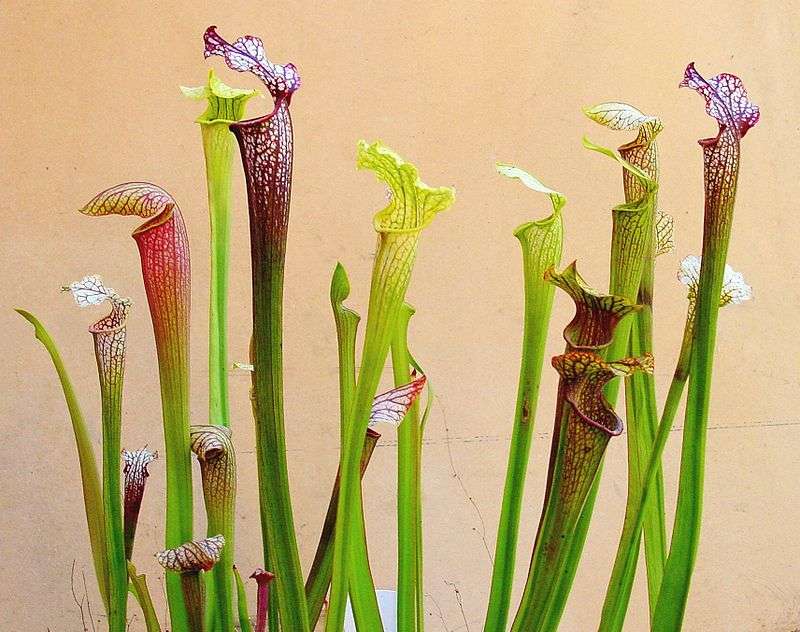
The majority have tall, slender pitchers with vibrant colors and alluring fragrances that draw insects. Visitors are deceived by transparent leaves or lured into dangerous positions by waxy surfaces while being intoxicated by poison-laced nectar. Those that trip and fall down the pitcher are caught by hairs that point downward, and the plants own enzymes quickly break them down.
Many Sarracenia, often referred to as trumpet pitchers, are among the greatest carnivorous plants for beginners because they are among the easiest plants to grow. However, with eight distinct species, many variations of each, and endless possibilities for hybridization, collecting Sarracenia can last a lifetime!

Soil
Make sure to move it once every three years or so for new soil and extra room. Sarracenia should also be transplanted if they require a larger container. This will occur when the plant is changing from being young to mature. Only do it in the winter; otherwise, the plant will be stressed.
Sarracenia thrive in acidic soil, just like other carnivorous plants do. Carnivorous plant soil is easily accessible for purchase or can be made at home. The soil for Sarracenia can be created with perlite, horticultural sand, and sphagnum peat moss.
Water
Water your American pitcher plants by using a water tray. Place the pot in the deep saucer and fill it with water to a depth of about 1 inch. Keep the soil damp to wet, but don’t worry about it being too wet. In general, when the plant is active in the summer, the soil should be kept moist. During the summer, you can also keep the soil extremely moist for a few days every month. Allow the soil to remain somewhat damp but not flooded during the winter.
Spraying water from above will cause the plant to consume soil-based moisture. You should use mineral-free water for your American pitcher plants. This is so that the plants can capture food to make up for their lack of nourishment while living in the wild on nutrient-poor soil. A mineral buildup in the soil and plant mortality will result from drinking any mineral-containing bottled, filtered, or tap water. Use only distilled, rainfall, or reverse osmosis water.
Temperature
Warm climates are ideal for Sarracenia growth. The plant will benefit from full sun in the summer and less sun in the winter. Sarracenia, sometimes known as American Pitcher plants, are among the most often kept carnivorous plants. We’ll cover issues like American pitcher plant (Sarracenia) soil, light, water, feeding, container needs, germination, and more in this comprehensive growing and care guide. They may survive in temperatures as low as 25 degrees Fahrenheit (-4 degrees Celsius) in the winter, but they prefer low temperatures and mild frost. Summertime comfort levels hover about 30 degrees Celsius, or 86 degrees Fahrenheit. Temperatures higher than 35C (95F) can damage your plant, and you might need to think about transferring it to a cooler area.
Fertilizer
Your plant will catch enough bugs inside the pitches if it is grown outdoors to feed itself. If you are keeping your plant indoors without feeding it and the climate outside is unfavorable for growing, fertilizing is a possibility. Plants cannot survive without food, so you must provide them enough nutrition. Fertilizers can also be used to hasten the growth of the plant.
Apply the fertilizers exclusively to the leaves after substantially diluting it. The soil should remain deficient in nutrients, thus avoid applying any fertilizers to it. For optimal effects, use once or twice each month. Use an orchid fertilizers or another fertilizers made for plants that thrive in acidic environments.
Table





